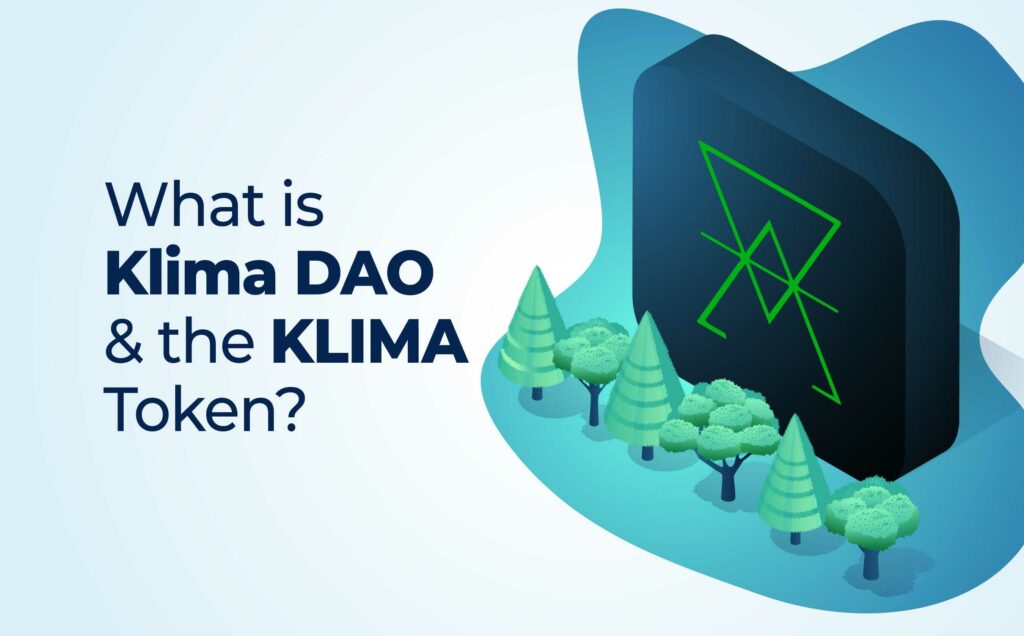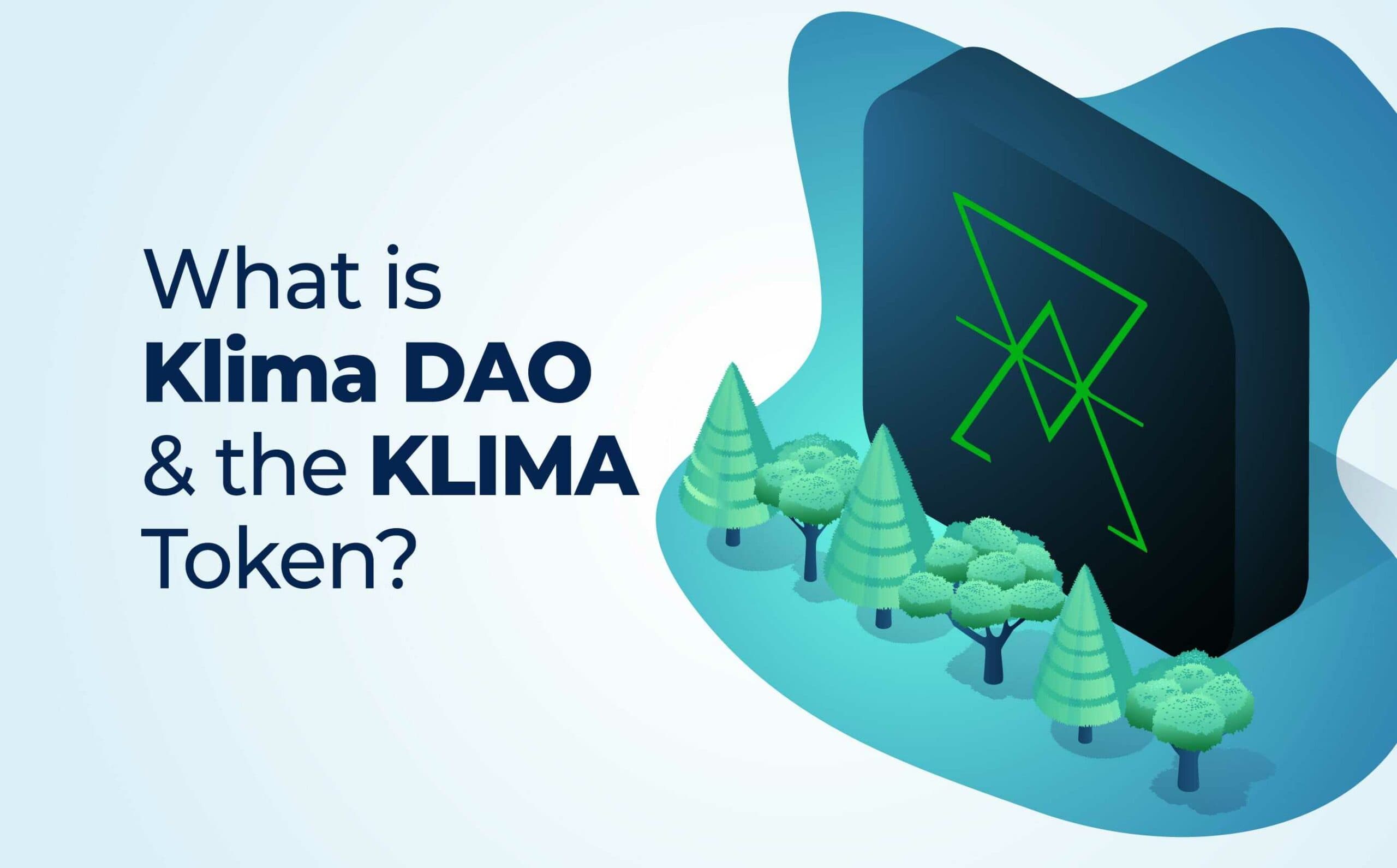
Klima DAO is a blockchain-based initiative at the center of the carbon economy. The project generates tokenized carbon credits in the form of the native KLIMA token. KLIMA tokens represent one tonne of carbon reduction, known as "base carbon tonnes" (BCTs). Plus, they entitle users to earn rewards by participating in KLIMA staking. Tokenized carbon credits offer a compelling new reserve currency that has a real-world impact on climate change by reducing greenhouse gas emissions. Klima DAO aims to add a layer of gamification to the carbon economy by incentivizing projects and entrepreneurs to make a profit while reducing their carbon footprint.
In this article, we’re going to dive deep into the Klima DAO ecosystem. Also, we’ll explore tokenized carbon credits, base carbon tonnes (BCTs), and the broader carbon economy. Plus, we’ll look at the KLIMA token, KLIMA staking, bonding, and Toucan Carbon Bridge.
Moralis Academy provides first-class Web3 and blockchain education. Check out our Blockchain & Bitcoin 101 course to gain a fundamental understanding of this technology. Then, see our Ethereum 101 course to learn about the differences between the two most-prominent blockchains. Or, see our Crypto for Beginners course to learn how to safely navigate a crypto exchange for the first time. At Moralis Academy, we teach students how to swap tokens and buy and sell crypto safely. Plus, we offer tips on how to recognize and avoid crypto scams! Begin your blockchain journey today with Moralis Academy!
What is Klima DAO?
Klima DAO is a group of “environmentalists, developers, and entrepreneurs” aiming to combine their knowledge and experience to make a positive impact on carbon markets. The open-source, transparent community uses Web3 and blockchain technologies to deliver a “measurable climate-positive impact” and also funnel climate finance into verified projects that create sustainable incentives to benefit the environment.
Two of the most prominent issues surrounding climate change are finance and coordination. However, despite the vast amounts of viable alternative energy sources available, hundreds of millions of dollars flow into fossil fuels annually for producing commodities and energy. Klima DAO generates tokenized carbon credits on the blockchain to address the organizational and financial barriers to delivering initiatives that bootstrap the carbon economy. Blockchain and Web3 technologies have the potential to mobilize climate change contributors cooperatively and laterally to optimize capital and resource use in an accountable way.
Furthermore, using smart contracts enables Klima DAO to remove intermediaries and automate innovative reward mechanisms that help to incentivize collaborations. Plus, the realization of the project’s vision is being expedited using open-source software with high levels of accountability and composability. Also, Klima DAO is committed to finding new ways to manage and coordinate resources that outpace current bureaucratic processes and removing barriers to participation in climate change initiatives.
Klima DAO operates on the energy-efficient Ethereum layer-2 solution, Polygon. The bonding architecture is similar to the OHM token in Olympus' DAO-governed protocol. Moreover, the project bridges traditional carbon markets and cutting-edge technologies to build a “climate innovation nexus”. Accordingly, the project aims to standardize practices throughout the decentralized finance (DeFi) ecosystem to foster technical expertise and accelerate impactful initiatives.
How Does Klima DAO Work?
The Klima DAO ecosystem creates value for its community via a “virtuous cycle” of economic growth. Also, all economic activities that occur within the ecosystem will subsequently increase the KLIMA token supply. Furthermore, KLIMA tokens can only enter circulation when BCTs are removed from circulation and locked up in the Klima DAO treasury. Plus, scaling the projects will result in a supply of KLIMA tokens backed by BCTs that is “inversely proportional to the availability of carbon offsets” on traditional carbon markets. Moreover, by taking the carbon supply off the market to lock it in the Kima DAO treasury, the price of carbon offsets will increase, along with the price of the KLIMA token.
The KLIMA Token
The native KLIMA token is a rebase token and a “floating algorithmic reserve currency backed by carbon offsets”. The ethos of the Klima DAO ecosystem stipulates that the treasury will only generate a KLIMA token if a minimum of one BCT is locked up. Also, as each BCT is backed by a carbon credit that commits to removing one tonne of carbon, the Klima DAO ecosystem is effectively built on the price of carbon. Accordingly, the KLIMA token is a speculative asset that is freely tradeable on the open market.
Only when the Klima treasury possesses enough BCTs to back new KLIMA tokens can they be generated to reward KLIMA "stakers". Plus, the BCT underpinning each KLIMA token is locked within the treasury. Accordingly, the project expects that the price of BCTs will increase in tandem with the broader carbon market.
As part of the Klima DAO “fair launch strategy”, the first KLIMA token sale took place via an “initial Discord offering”. At the time of writing, the KLIMA token is trading at around $1,840 with a market cap of $862 million, according to CoinGecko. The KLIMA token will also play a role in protocol governance to grant voting power to participate in policy changes.
Toucan Carbon Bridge
The reserve asset of Klima DAO is the base carbon tonne (BCT). A BCT is a carbon offset index token that represents a basket of various carbon tonnes, including TCO2. Each TCO2 unit represents an individual carbon offset that projects can buy on the blockchain via the Toucan Carbon Bridge. Also, each offset token equates to one tonne of carbon dioxide emissions that has been eliminated via verifiable eco-conscious projects.
Further, the TCO2 carbon offset contains characteristics such as the name and type of the project, the serial number, and the year of verification. Also, different types of TCO2 tokens can represent carbon offsets from different initiatives in various fields and geographies. The base carbon pool helps to standardize the on-chain carbon market. All TCO2 tokens can be staked in the base carbon pool. In return, users receive the BCT carbon index token.
Three main incentives exist to promote participation in the Klima DAO ecosystem over a longer period. These are bonding, staking, and rebasing. Below, we take a closer look at the inner workings of the Klima DAO ecosystem.
Bonding
Bonding entails trading a share of a liquidity pool to the Klima protocol. The protocol then quotes an amount of KLIMA tokens that a user receives in return, along with a discount rate and a vesting period. In turn, this allows the Klima treasury to increase its purchasing power beyond the sole use of BCT, which increases the supply of the KLIMA token.
Do you want to learn how to create blockchain applications to benefit the environment? If so, check out the Ethereum Smart Contract Programming 101 course at Moralis Academy! Here, you’ll learn how to build and deploy smart contracts using Solidity's programming language.
Then, check out our Ethereum Smart Contract Programming 201 course. This course is for anyone looking to pursue a career as a smart contract developer. Also, this course teaches students how to use Truffle Suite and the latest industry standards. Following this, see our Etheruem dApp Programming course to learn how to deploy your own CryptoKitties non-fungible token (NFT) marketplace. Become blockchain certified with Moralis Academy today!
KLIMA Staking
By taking part in KLIMA staking, participants can receive a distribution of profits as an incentive for long-term KLIMA holdings. This provides users with exposure to the increasing price of carbon. KLIMA staking rewards are proportional to the amount of KLIMA tokens in a stake and the duration of the stake. Therefore, locking up more KLIMA tokens for longer periods will result in higher compounding returns.
For each KLIMA token in the Klima staking contract, stakers receive "sKLIMA" tokens at a 1:1 ratio. The sKLIMA token is not officially available on any cryptocurrency exchanges, making the asset largely illiquid. However, sKLIMA can be transferred between wallet addresses. Upon un-staking, users can redeem sKLIMA tokens for an equal amount of KLIMA tokens. Check out the DeFi 101 course at Moralis Academy for more information. Here, you’ll learn how to interact with some of the top DeFi protocols using the number-one Web3 wallet, MetaMask.
Rebasing
When users stake their KLIMA tokens, assets are sent to the Klima staking contract. However, the protocol does not request these funds back. The result is a higher ratio of KLIMA tokens in the staking contract than the outstanding balance of sKLIMA tokens. To address this discrepancy and return to the correct balance, the protocol issues a rebase of the sKLIMA token. This also helps to reduce interference with KLIMA staking. Additionally, expansions in the supply occur when the platform experiences an increase in the number of stakers or bonders.
The Carbon Economy
Carbon markets exist to minimize greenhouse gas emissions sustainably by establishing emission limits and financial tools that represent carbon reductions. These markets allow for the trading of “emission units”. One carbon offset unit equals one tonne of carbon dioxide (or equivalent), removal, or avoidance. In turn, this system makes it cheaper to reduce carbon emissions.
Moreover, carbon reduction projects can sell carbon credits to pay for set-up costs and operational expenditures. Plus, developers and entrepreneurs have an incentive to make a profit via carbon emission initiatives that have real-world impact.
Base Carbon Tonnes and Carbon Market Dynamics
The KLIMA token presents a novel type of currency backed by the price of carbon. The price of BCTs reflects the price of carbon, which the Klima team expects to increase with the demand for lower carbon emissions and the advancements of carbon offset projects. Also, an increase in the number of stakers usually results in the purchase of more KLIMA from the market. As the price of the KLIMA token increases, an opportunity arises for the protocol to sell tokens at a higher price to create a yield for KLIMA staking participants. This model aims to incentivize new users to help perpetuate the cycle.
Furthermore, as the price of the KLIMA token increases, the discount rate for bonders increases. This allows for the minting of more KLIMA tokens and increases exit liquidity. Conversely, declining demand for the platform will cause a reduction in staking rewards and the number of bonds that can exist. However, Klima DAO is confident that the market for carbon offset is growing rapidly enough to mitigate any declines that may fall between periods of growth.
What is Klima DAO and the KLIMA Token? - Summary
Klima DAO offers a simple method for engaging with the carbon economy on the blockchain. Although the project does not seek to establish a stable price for carbon in the short term, it aims to create a better picture of what on-chain carbon markets should look like through voting and policy decisions. Furthermore, the platform aims to use the volatility of the new carbon economy for growth early on so that the KLIMA token can achieve price stability with increasing demand and a steady supply. Moreover, the tokenized carbon reduction platform aims to create a “new, regenerative monetary system” that brings transparency, liquidity, and infrastructure to the carbon economy with the use of BCTs.
The Klima DAO project is striving to bring the carbon economy to robust markets and create true value out of carbon emission reductions on the blockchain. If you’re part of an environmental initiative and want to know how blockchain technology can benefit your project, you’ve come to the right place! Moralis Academy has expert-guided courses to suit all levels of knowledge and experience.
Check out the Blockchain Business Masterclass course to learn how to manage a team of blockchain developers. Or, see our OriginTrail 101 and Morpheus Network 101 courses to find out how blockchain and Web3 technologies are revolutionizing supply chains worldwide. Moralis Academy is the number one Web3 and blockchain education suite available online. Join our community of over 30,000 students today! Also, don’t forget to follow us on Twitter @MoralisAcademy! We’d love to hear your thoughts about Klima DAO and the KLIMA token!





